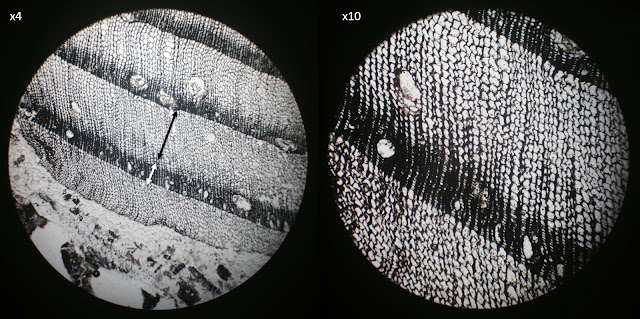Microfossil of the Month: Which Wood?
Something a little bit different for October. This fits in nicely with what I've been up to this week, preparing teaching materials on wood charcoal analysis in archaeology. Although I am not technically a wood specialist, I am wondering if I should pick up a new skill set, as it would actually be very useful as a thin section micromorphologist. This image shows a cross section through an unidentified fragment of wood charcoal in a thin section of sediments from the tower at Cesis Castle, Latvia. There are layers within the sediment that are full of tiny wood charcoal fragments, and actually we see bits of wood a lot when looking at thin sections of ash samples, unsurprisingly. You can see the annual rings quite clearly in this fragment, and it can be identified as a soft wood species (coniferous) due to the lack of pores. Soft woods are a bit more difficult to identify than hard woods (from deciduous trees), as their structure is more simple and less distinctive. In this example we can see resin canals, which do not have a very thick layers of cells surrounding them, which suggests this is from the genus Pinus. The transition from the earlywood part of the ring to the late wood is fairly distinct which excludes a number of species. Possibilities include black pine (Pinus negra), mountain pine (Pinus mugo) or Scots/Common pine (Pinus sylvestris), all of which have distinct rings and abrupt change from early wood to late wood, and large resin canals with thin walls. Scots pine is one of the dominant species in Latvia today so seems the most likely candidate. As I do not have my own extensive reference collection, I have to use digital reference collections to help make IDs - luckily there are lots of great collections out there, for example woodanatomy.ch which covers central European species. Are you an anthracologist? What is your ID suggestion? Answers in the comments! :)


Comments
Post a Comment